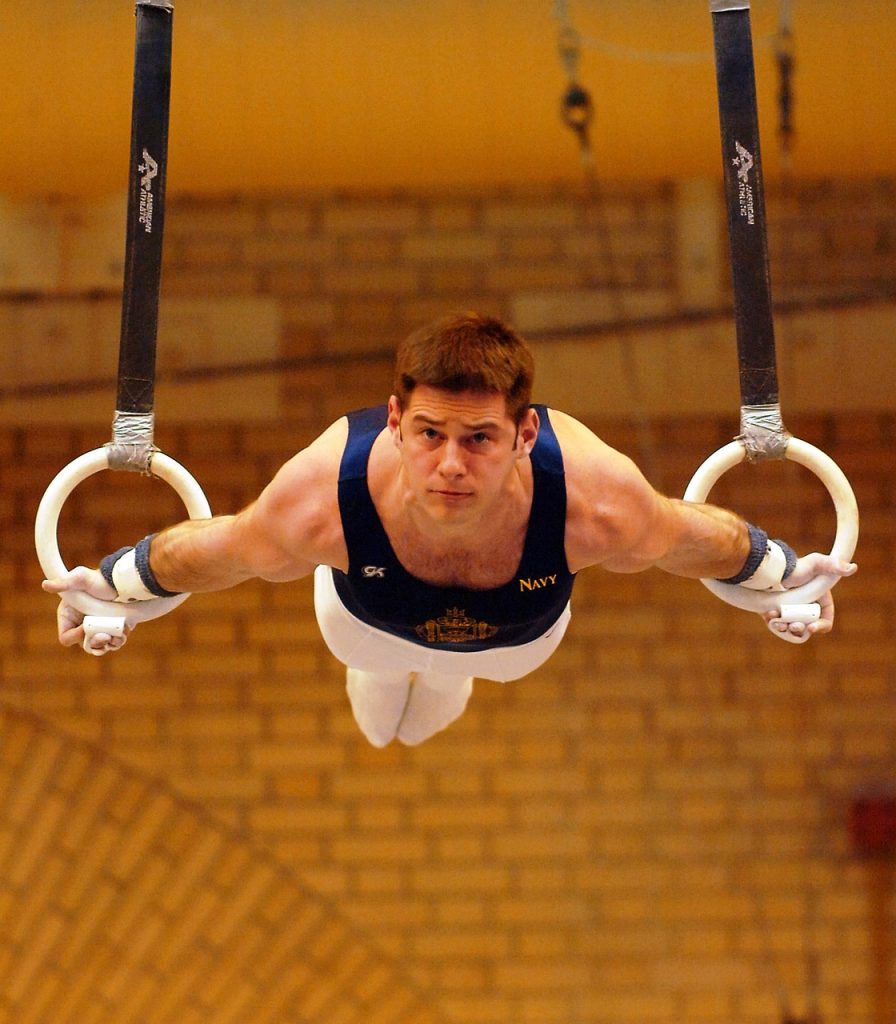In medical schools and textbooks, proprioception is defined as ‘body position sense’—the ability to know where our body is at all times.
In other words, proprioception refers to our uncanny capacity to know almost exactly where our arm, leg, or finger is, without having to look at it. With proprioception, you can estimate the angle of your elbow, the position of your hand, and the spread of your fingers. If you had to touch your nose, you could do so, even with your eyes closed.
But, as impressive as this ability is, it is only part of the proprioception story. The ultimate purpose of proprioception is to control the way we move.
Proprioception gathers continuous input from the millions of sensors in our skin, muscles, joints, and ligaments… combines that with the input from our five main senses… then uses it all to control our balance, coordination, posture, and movement.
Whether you’re picking up a glass, throwing a ball, watching television, or walking down a step, proprioception is constantly monitoring the input from the nerve sensors in your body, to make sure that the output to your muscles is perfect. This is a system so complex, diverse, and adaptable, that no amount of robotic or computing power can come close to duplicating the smooth and coordinated movements of the human body.
Your brain is a processing centre. It doesn’t actually generate anything; it just connects the mass of incoming signals in the right way. Our every thought and action starts life as an incoming nerve signal.
The reason we don’t survive hanging (except in rare cases) is because we can only survive about fifteen seconds once the spinal cord is cut or torn at the top of the neck. Those last seconds are courtesy of the small amount of input from the muscles of the head, and the sensory input from taste, smell, sight, and hearing.
The barrage of incoming nerve signals is the raw material that creates all brain function and, therefore, all human function. And most of those incoming nerve signals originate in the muscles themselves.
The brain’s function is to turn those incoming nerve signals into action. In human beings, action will mean making muscles work, and, to a lesser extent, controlling our glands and our digestion.
Thus, brain output is determined by its input—input that comes mainly from the nerve sensors which control proprioception.
Nerve messages are classified as either incoming or outgoing. Incoming nerve messages are heading towards the spinal cord or brain and are known as sensory, or afferent. Outgoing nerve messages travel from the brain or spinal cord and are intended to make something happen; they are therefore known as motor, or efferent.
The ability for us to move at all—let alone perform somersaults, catch a ball, go to the toilet, or climb stairs—depends on the seamless integration of these two types of messages.
Our awareness of the outside world is maintained through the five senses of sight, smell, taste, hearing, and touch. Our awareness of our inside world is maintained through proprioception. It really is our ‘sixth sense’.
Proprioceptors are a special group of sensors found throughout the body. They provide information on the movement, position, tension, and force in every area of the body.
Most proprioceptors, especially those in the skin, send messages only when they are stimulated, but a special class—known as muscle spindle cells— sends a constant stream of messages to the spinal cord and brain, even when the muscle is resting.
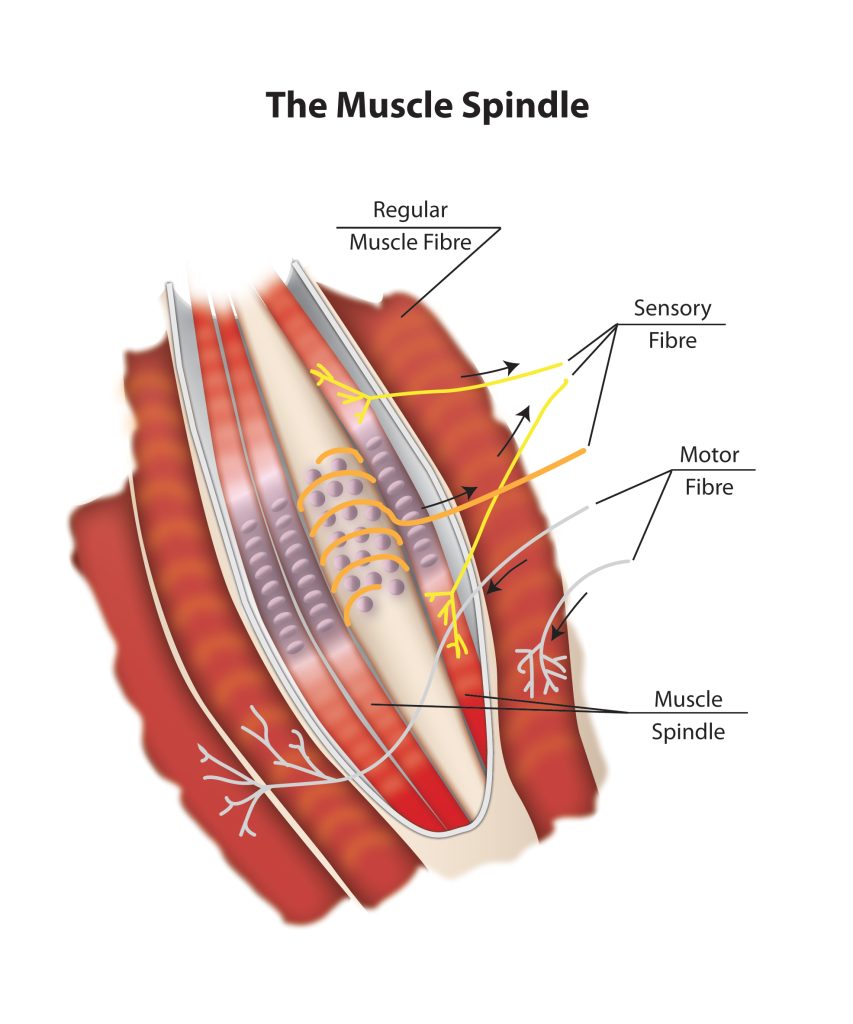
Thus, brain output is determined by its input—input that comes mainly from the nerve sensors which control proprioception.
These spindle cells are smaller muscle fibres that sit alongside ordinary muscle fibres. Their job is to detect the slightest changes in the tension of the muscle.
Every muscle spindle cell constantly generates signals which travel from the muscle to the spinal cord. Like the rev counter of an engine, they are constantly active, responding to the activity of the muscle.
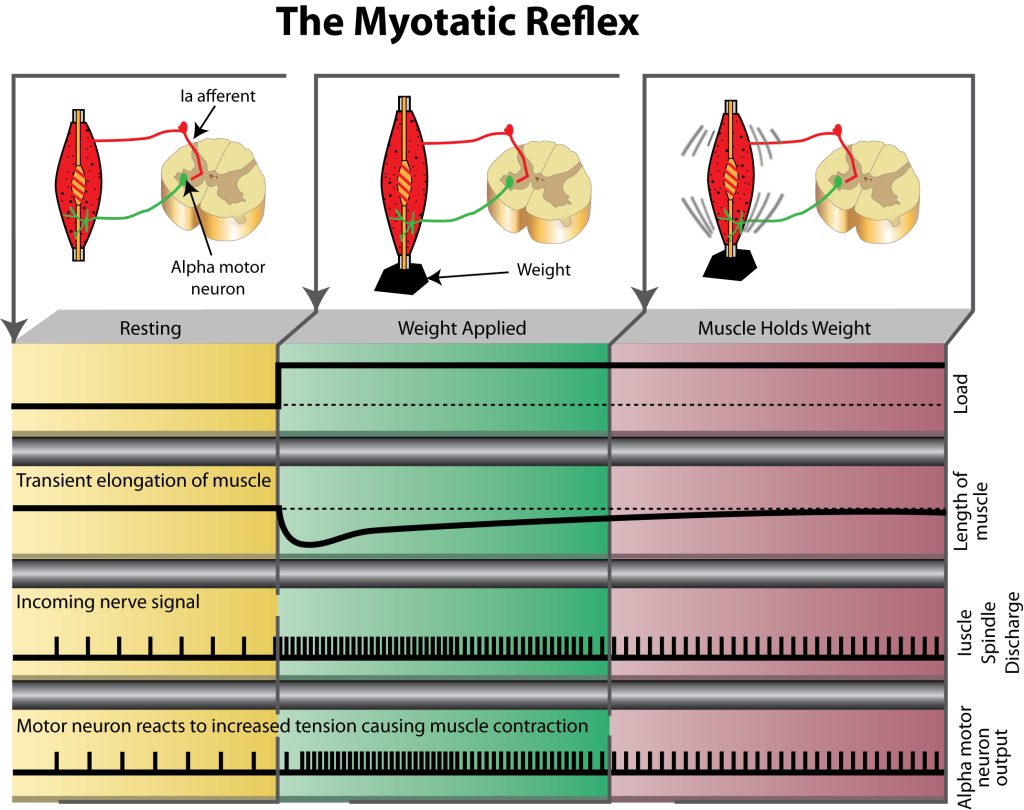
Whether the muscle is fully stretched or semi-contracted, the muscle spindles adjust their output to reflect the amount of tension in the muscle. This way, the muscle is ready to react at any time, no matter its position.
All proprioceptive information is sent to the spinal cord to perform two functions. First, it controls muscle tone, and, second, it supplies the brain and higher processing centres with vital feedback.
Although a great deal of sensory information reaches the brain, most of it is filtered before it gets to the consciousness. A majority of nerve messages never get as far as the brain; their reflex effects are managed within the spinal cord, totally independent of brain control.
In animal experiments—of which I do not approve—on decerebrate dogs (dogs that have had their spinal cords cut in the neck), researchers have found that that when they tickle such a dog on the shoulder blade, the dog will lift its hind leg on the same side to ‘scratch’ the ‘flea’ that is annoying it. When the tickling crosses the spine, the other leg starts scratching. This movement is occurring without any input from the brain; it is purely under reflex control. Similarly, a walking movement will be provoked simply by pushing on the pads of the dog’s paws.
Motor output simply refers to messages sent from the brain to the body. These messages are designed to produce an action.
All muscles are made of muscle fibres which contract when they receive an impulse from special nerve cells in the spinal cord called anterior motor neurons (which is a silly name because there are no posterior motor neurons).
Although most of our conscious movement occurs via muscles that are traditionally classified as voluntary, up to 90% of our ‘voluntary’ muscle activity is totally subconscious or involuntary, controlled by reflexes that originate in our proprioceptors. It is this involuntary activity that stabilises, holds, controls, and limits the movements of our bones and joints.
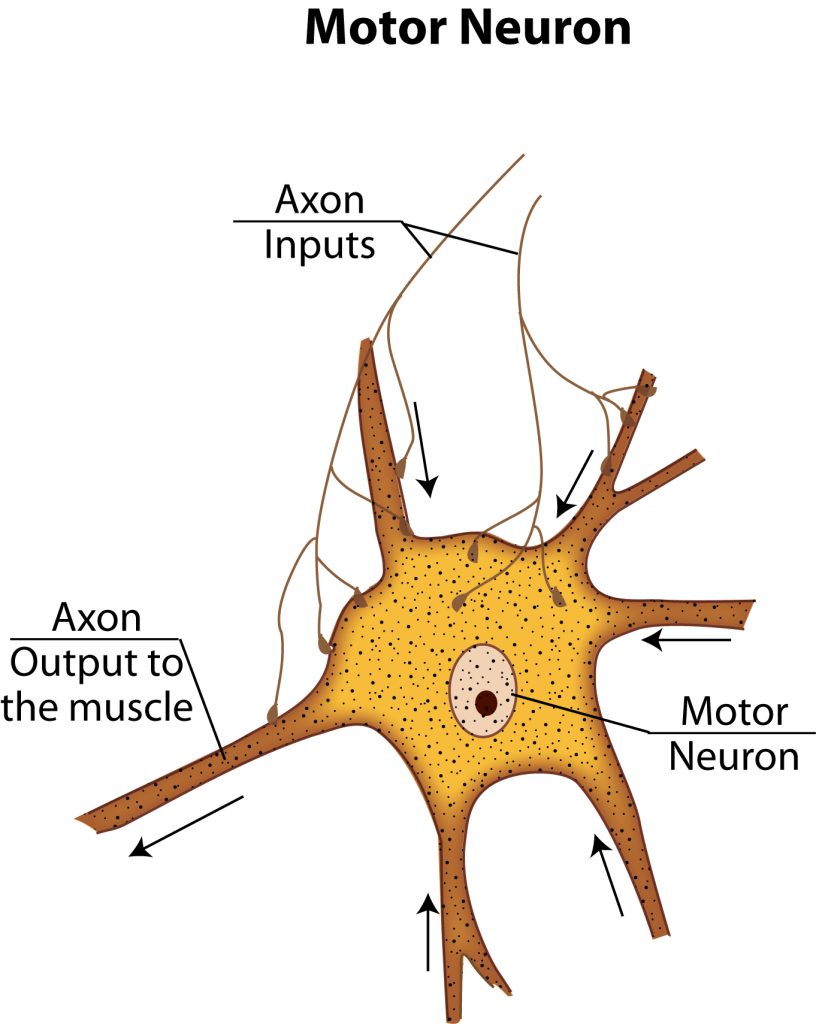
Motor neurons are fascinating cells with only a single output. All they do is send messages—actually electrical impulses—to muscle fibres. A single motor neuron will supply one or more muscle fibres, so thousands of motor neurons have to act together to bring a muscle to full contraction. Every time they send a message, a muscle fibre, or fibres, will contract. The faster the messages are sent, the faster the fibre will contract. The more motor neurons that are sending messages, the stronger the contraction will be.
But what makes motor neurons really fascinating is not their output, but their input. Each motor neuron receives up to 10,000 different inputs—messages from other nerves—bringing information from other muscles, skin, tendons, ligaments, bones, and the brain. However, a motor neuron will not send a message to a muscle fibre until it has accumulated enough inputs. For your average motor neuron, this would be about 70mV (the work of nerves is measured in milli volts). Since each input supplies only one-half to one mV, it is impossible for any one input to cause an output.
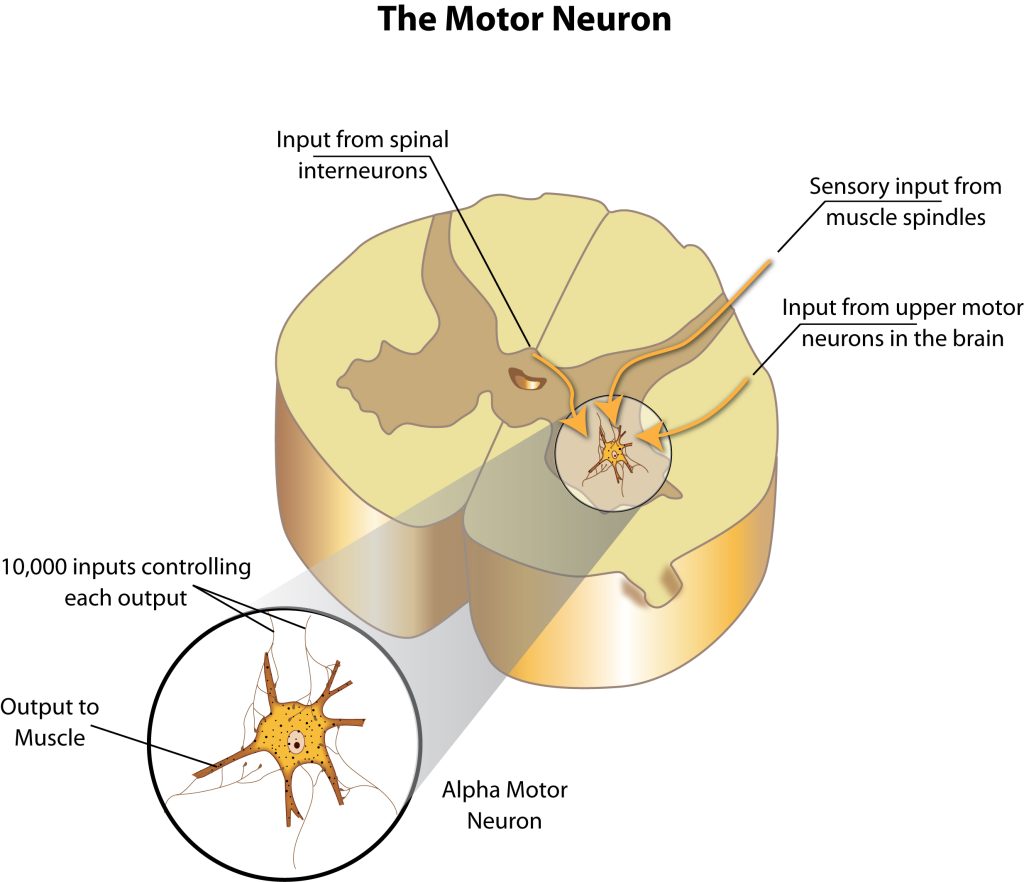
Motor neurons are fascinating cells with only a single output. All they do is send messages—actually electrical impulses—to muscle fibres. A single motor neuron will supply one or more muscle fibres, so thousands of motor neurons have to act together to bring a muscle to full contraction. Every time they send a message, a muscle fibre, or fibres, will contract. The faster the messages are sent, the faster the fibre will contract. The more motor neurons that are sending messages, the stronger the contraction will be.
What makes motor neurons really fascinating is not their output, but their input. Each motor neuron receives up to 10,000 different inputs—messages from other nerves—bringing information from other muscles, skin, tendons, ligaments, bones, and the brain. However, a motor neuron will not send a message to a muscle fibre until it has accumulated enough inputs. For your average motor neuron, this would be about 70mV (the work of nerves is measured in milli volts). Since each input supplies only one-half to one mV, it is impossible for any one input to cause an output.

